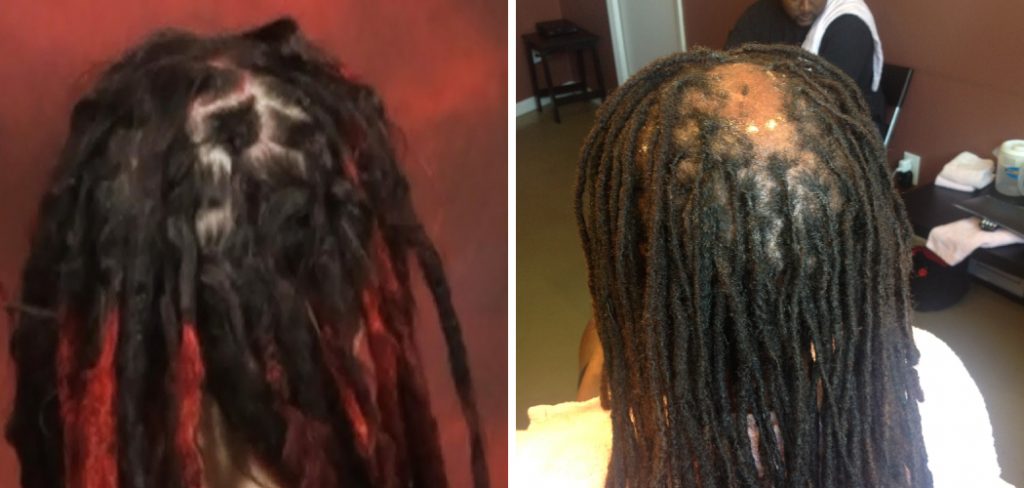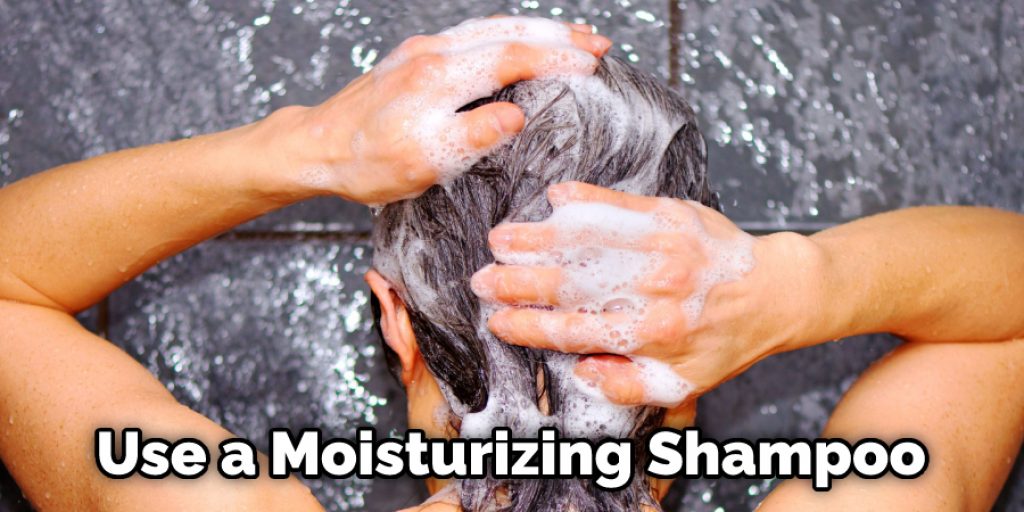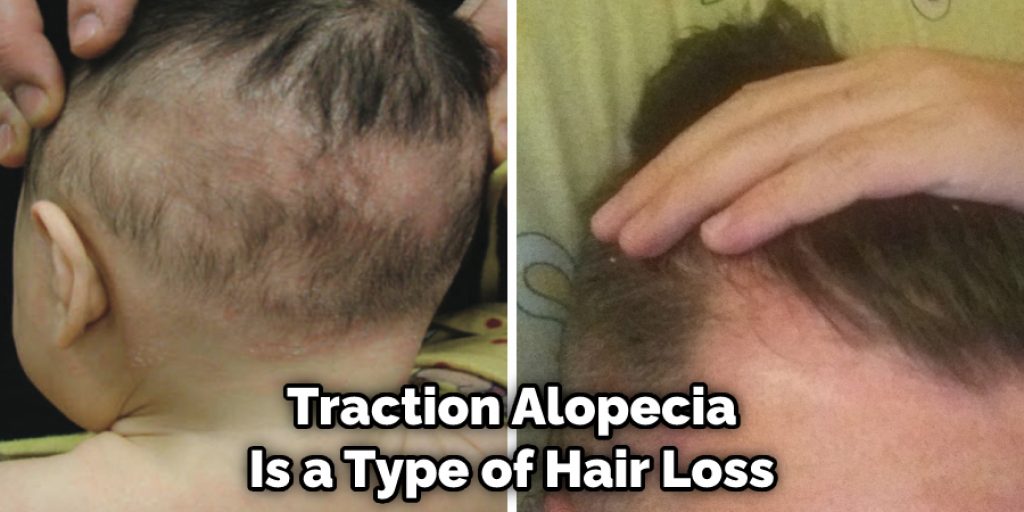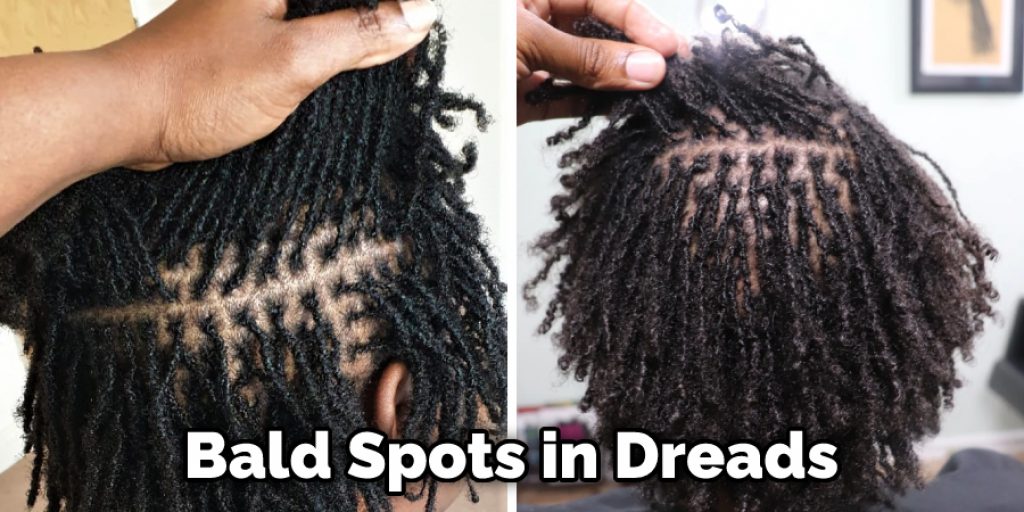Dreads are a unique hairstyle that can be styled in many different ways. However, while twisting and knotting the hair into dreads is the most common method, some people experience bald spots in their dreadlocks.

This can be caused by many factors, such as tight braiding or using too much product. Luckily, there are several ways on how to fix bald spots in dreads. In this post, we will discuss some of the most popular methods. In addition, here are a few tips to help you get your locks looking their best.
Summary: If you have bald spots in your dreadlocks, there are a few things that you can do to try and fix them. You can either try using a hair wax or cream to fill in the bald spots, or you can use a hairpiece to cover up the bald spots.
10 Reasons That Causes Bald Spots in Dreads
1. Not Combing or Brushing Enough
If you’re not brushing your dreads regularly, you’re more likely to experience bald spots. Dreads that are matted together can cause hair loss and bald spots. Make sure you’re combing and brushing your dreads every day (or at least every other day).
2. Build-Up of Product
If you use too many products in your dreads, it can lead to bald spots. Things like wax and gel can cause build-up, making your hair greasy and weighed down. This can prevent your hair from growing, causing bald spots. Try using less product, or lighter oil or balm instead, to avoid this.
3. Not Enough Moisture
Dreads need moisture to stay healthy and grow properly. If your hair is dry, it can lead to bald spots. To ensure your dreads are getting enough moisture, try spritzing them with water every day or using a moisturizing shampoo and conditioner. You can also use dread wax to help lock in moisture.

4. Tight Braids or Cornrows
Tension on your scalp from tight hairstyles like braids and cornrows can cause bald spots. To avoid this, try to wear your hair in styles that don’t pull too tightly. If you must wear a tight hairstyle, give yourself a break every now and then to let your hair relax.
5. Poor Nutrition
A poor diet can lead to bald spots in your dreads. Make sure you eat a balanced diet with plenty of fruits, vegetables, and proteins. If you’re not sure what to eat, talk to your doctor or a nutritionist. Dandruff can also cause bald spots. Be sure to shampoo your dreads regularly and use a dandruff shampoo if necessary.
6. Traction Alopecia
Traction alopecia is a type of hair loss that’s caused by traction. Excessive pulling on your hair can cause the hair follicles to become damaged and eventually lead to bald spots. If you’re frequently wearing dreads in a tight style, you may be at risk for traction alopecia.

7. Excessive Heat
Excessive heat can damage your hair and cause it to break off. If you’re exposing your dreads to too much heat, you’re more likely to experience bald spots. Avoid using hot tools like flat irons and curling irons on your dreads. Also, make sure you’re using products that are designed for dreadlocks.
8. Chemicals
If you’re using harsh chemicals on your hair, it could lead to bald spots. Harsh chemicals can damage the hair follicles and cause them to stop growing. So, if you’re using chemicals on your hair, make sure they’re gentle and non-damaging.
9. Lack of Maintenance
If you’re not maintaining your dreads properly, you’re more likely to experience bald spots. Make sure you keep your dreads clean and free of lint and debris. It would help if you also were oiling and conditioning them regularly.
10. Genetics
Some people are predisposed to baldness and will experience it no matter what they do. It may be genetic if you’re experiencing bald spots in your dreads, and there’s not much you can do about it.
10 Effective Steps on How to Fix Bald Spots in Dreads
Step 1: Assess the Severity of Bald Spots
The first step in fixing bald spots in dreads is to determine the severity of the problem. Examine your dreads carefully and take note of the number, size, and location of the bald spots. Are they concentrated in one area or spread throughout your head? Understanding the extent of the issue will help you choose the most effective solution.
Step 2: Identify the Cause
There are several possible causes of bald spots in dreads, including tension from tight hairstyles, poor maintenance, and scalp conditions like alopecia. Determine the underlying cause of your bald spots to ensure that your chosen solution will address the root of the problem.
Step 3: Address the Underlying Cause
Once you’ve identified the cause of your bald spots, take steps to address it:
- If tension is the issue, avoid wearing tight hairstyles and give your scalp time to recover. You can also try massaging your scalp daily to stimulate blood flow and promote hair growth.
- If poor maintenance is the problem, commit to a regular maintenance routine, including washing your dreads with a residue-free shampoo, conditioning your scalp, and re-twisting your dreads as needed.
- If a scalp condition like alopecia is the cause, consult a dermatologist for appropriate treatment options.
Step 4: Trim Excess Hair Around the Bald Spots
Before attempting to repair the bald spots, trim any excess hair surrounding the affected areas. This will create a clean, even surface for new growth and make it easier to work with the dreads.
Step 5: Employ the Instant Locs Method
The Instant Locs method involves using a crochet hook to pull loose hairs into the dreadlock, essentially creating new growth. This technique can help to fill in bald spots and make your dreads appear fuller.
- Begin by selecting a dreadlock adjacent to the bald spot.
- Hold the dreadlock tightly near the root with one hand.
- Insert the crochet hook into the dreadlock and use it to pull loose hairs from the scalp into the dreadlock.
- Continue this process until you have incorporated enough loose hair to fill in the bald spot.
- Repeat this process for any additional bald spots.
Step 6: Use Dreadlock Extensions
If your bald spots are particularly large or severe, you may need to use dreadlock extensions to create the appearance of fullness. To do this:
- Purchase dreadlock extensions that match the color, texture, and thickness of your natural hair.
- Divide the hair in the bald spot into small sections, similar in size to your existing dreads.
- Attach the dreadlock extensions to the natural hair using a crochet hook or a latch hook, depending on the type of extension.
- Ensure that the extensions are secure and blend seamlessly with your natural hair.
Step 7: Promote Hair Growth
To encourage new hair growth and prevent future bald spots, follow these tips:
- Maintain a healthy diet, rich in vitamins and minerals that support hair growth, such as biotin, vitamin D, and zinc.
- Massage your scalp daily to stimulate blood flow and promote hair growth.
- Consider using natural hair growth treatments, such as essential oils (e.g., rosemary or peppermint oil) or castor oil, applied directly to the scalp.
- Avoid using harsh chemicals or heat styling tools that can damage your hair and scalp.
Step 8: Practice Proper Maintenance
Prevent future bald spots by practicing proper dreadlock maintenance:
- Wash your dreads regularly with a residue-free shampoo, taking care to cleanse your scalp thoroughly.
- Condition your scalp and dreads with natural oils, such as coconut or jojoba oil, to maintain moisture and prevent breakage.
- Re-twist your dreads as needed, being careful not to create too much tension on your scalp.
- Avoid using heavy, wax-based products that can lead to buildup and damage your dreads.
- Wear a silk or satin headscarf at night to protect your dreads and prevent friction that can contribute to hair breakage.
Step 9: Monitor Your Progress
As you work to fix bald spots in your dreads, regularly assess your progress. Take note of any changes in the appearance, size, or number of bald spots, as well as the overall health of your dreads and scalp. This will help you determine if your chosen solutions are effective and if any adjustments to your routine are necessary.
Step 10: Consult a Professional
If you are struggling to fix bald spots in your dreads on your own or are concerned about the health of your hair and scalp, consider consulting a professional loctician or dermatologist. They can provide personalized advice, recommend appropriate treatments, and help you develop a maintenance routine tailored to your specific needs.
By following these steps and adopting a consistent, healthy maintenance routine, you can effectively fix bald spots in your dreads and prevent future issues. Remember that patience and persistence are key, as repairing bald spots and promoting new hair growth can take time. With dedication and proper care, you can achieve fuller, healthier dreads and enjoy your unique hairstyle for years to come.
Here we have given tips on how to fix bald spots in dreads.
- If you have a bald spot in your dreads, it is best to try and fix the problem as soon as possible. The longer the bald spot goes untreated, the harder it will be to correct the problem.
- There are many ways to fix a bald spot in your dreadlocks. One way is to use a hair bonding agent to fill in the bald spot. Another way is to use dread extensions to cover up the bald spot.
- If you are using a hair bonding agent to fix your bald spot, make sure that you choose a specifically designed product for dreadlocks. Otherwise, the product may not be effective and could damage your dreads.
- If you are using dread extensions to fix your bald spot, make sure that you choose extensions that are the same color as your dreadlocks. Otherwise, the extensions will stand out and will not look natural.
- Once you have fixed the bald spot in your dreadlocks, keep an eye on it and make sure that the bald spot does not reappear. If it does, you will need to take corrective measures.
- If you are experiencing bald spots in your dreads, it is likely because they are too long. By trimming your dreads, you will take away some weight and reduce the chances of falling out.

Frequently Asked Questions
What Causes Bald Spots in Dreads?
Bald spots in dreads are usually caused by the same things that cause hair loss throughout the body, including stress, hormonal imbalance, and poor diet. To prevent them from happening in the first place, make sure to keep your Dreadlocks healthy by avoiding excessive heat or styling products, eating a balanced and nutritious diet, drinking enough water daily, and staying hydrated. If you do experience balding patches while wearing dreads, there are some remedies available such as using Rogaine or minoxidil (5 percent solution) to encourage regrowth of hair at the spot.
Can People With Dreads Go Bald?
It is possible for people with dreads to go bald, but it will take a lot of effort and patience. Balding usually occurs as hair loss from the crown layer of the scalp. The process typically takes about two years but can be accelerated if you are using excessive heat or styling your hair excessively. In addition, chemotherapy and other treatments that damage hair may also cause rapid baldness in persons with dreadlocks.
How Can I Thicken My Locs?
Locs are often times described as “thick, natural hair,” and they can be quite a challenge to style. They may also be difficult to manage if you want them to last throughout the day. Fortunately, there are many ways that you can thicken your locs without using any harsh chemicals or products.
One popular method is braiding your locs. This simple process uses extensions or weaves in order for you to create fuller, thicker locks of hair. You can either do this yourself or have someone else do it for you.
Another option is wigs and Wefts. These hairstyles use synthetic fibers (usual mink) which help to imitate the appearance of natural hair while providing durability and ease of styling.
Finally, if thickening your locs isn’t an option, but you still want them styled neatly every day, then try a headband. This type of accessory uses elastic bands around the forehead, which helps keep logs groomed all day long!
Does Pulled Hair Grow Back?
It largely depends on the individual’s genetics and hair growth pattern. That being said, some people say that pulled hair may grow back slower than normal hair, but it will definitely grow back. Others say that pulled hair usually doesn’t grow back at all.
Conclusion
Dreadlocks are a beautiful style when they are healthy and full. However, if you have bald spots in your dreads, there are some things that you can do to help them grow back. We’ve outlined the steps that you need to take below. Bald spots in dreads can be caused by several things, from poor hair care to neglect. There are a few ways to fix bald spots in dreadlocks re-twisting the locks, using natural oils and butter, or braiding new growth into the locks.
Each method has its pros and cons, so it’s essential to choose the one that will work best for you and your dreadlocks. We hope this blog post was helpful to give you some insights on how to fix bald spots in dreads. Have you tried any of these methods? What has worked best for you? Let us know in the comments section.
